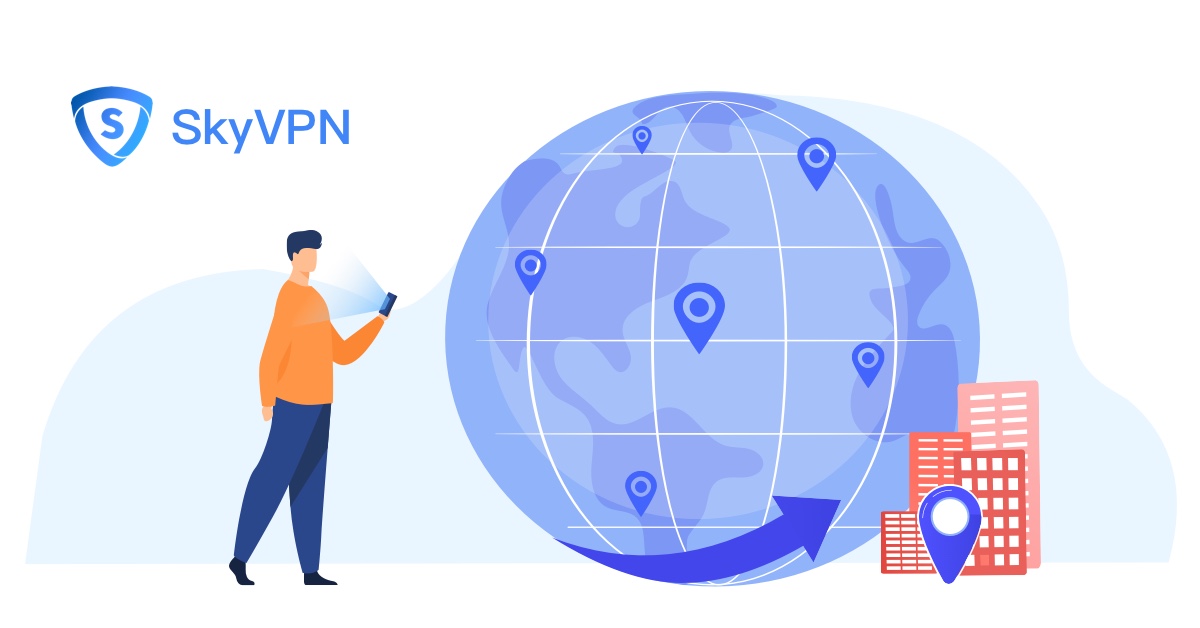
Imagine a situation when you want to Skype with your friends as you travel around the world but Skype fails to work as usual. It has nothing to do with your mobile state but due to blocked Internet.
It’s quite annoying to see websites so blocked or WiFi so restricted that stops you from visiting your favorite content on the Internet. However, there are some measures that can be taken to bypass blocked sites and WiFi restrictions. Here come the details.
Why Websites are Blocked and WiFi Restricted in Some Countries or Regions
Restricted Internet exists for more than one reason.
First, some service providers prohibit their content from being visited by people from other countries. For example, the Netflix streaming catalog for the US is exclusively available for those living in the US. If you live in other countries, Netflix may be also available to you but the content isn’t the same as that in the US.
Second, some governments block some websites or applications for political considerations. For example, quite a lot of Chinese applications are banned in India and Pakistan due to considerations of cybersecurity. Social media is also blocked in Turkey by the government to quell the protests. The most serious example of Internet restriction is China where almost all foreign social media applications and websites are blocked there.
Then, some companies block their Internet to stop employees from having access to work-related Internet content such as social media, streaming, etc. Of course, the free visits to all of the Internet is also a risk of possibly compromising their online security.
Likewise, the Internet is also restricted at school because it’s believed by school network administrators that streaming, online gaming, and social media are unrelated to their studying. Moreover, all the above activities will use up the majority of school bandwidth. Therefore, high restriction measures are used at the campus.
In addition, some sensitive Internet content is restricted in some countries such as porn which is not allowed in India.
Even though websites are blocked and WiFi restricted for different reasons, it’s not what the Internet should be.

How are Websites Blocked and WiFi Restricted?
Blacklist Websites
The Internet is made up of different addresses. Your browser will be led to the server where all the content is stored after a website is transformed to numeric digits that play a role as an address on the Internet. Once the numeric digits are contained on the blacklist of the network administration, then it’ll be impossible for you to visit them.
Track Your IP Address
When some content on the Internet is exclusively available for some countries, your IP address is the only clue.
Your IP address tells so much information about you to others, including your geological location, your online activities, your browsing history, and even your browsing habits. Your IP address is assigned to you by your Internet service provider. If you change your IP address, your online activities won’t be tracked.
Easy-to-use Tips on How to Bypass WiFi Restrictions and Unblock Barred Sites
Use a VPN
A Virtual Private Network, also called VPN, has been one of the must-have applications for students at school. Using a VPN is the easiest way to bypass WiFi restrictions and unblock barred sites. With one-tap click, you’ll be allowed to visit all the online content on the Internet no matter where you stay.
One of the leading functions of a Virtual Private Network lies in its capability to mask your IP address. As you get your device connected with a VPN server, the US server, for example, your IP address will be changed. Therefore, all the US-exclusive content will be available to you as well.
Use Proxy
To bypass blocked websites or restricted WiFi, a Proxy also helps.
Proxy works almost the same as a VPN but it fails to provide an end-to-end encrypted tunnel and it calls for some professional knowledge as you get it configured. So, it’s not so easy to be used as a one-tap VPN. Proxy works very well to unblock restricted sites and the Internet while it doesn’t work so well to keep full anonymity.
Use Tor
As Tor is used to visit the Internet, your traffic must cover long-distance travel over thousands of nodes along the way. Based on a decentralized structure, Tor is safe to use because it fails to be monitored by any filter. However, the process is so long that it runs slowly.
Use Alternate DNS Server
Sometimes, all protections are linked with the DNS server, which usually occurs at school. Although it seldom occurs, it’s still possible to see that at your school that stops you from visiting some websites based on the DNS system.
When it arrives, an alternate DNS server can be used to solve it. Luckily, the most popular DNS server is Google which tells you how to convert into Google DNS in a guide.
Use SSH Tunnel
An SSH tunnel works similarly to a VPN, allowing data to be transmitted through a tunnel. Generally speaking, an SSH tunnel isn’t used by everyone because its configuration calls for professional knowledge about technology. Therefore, it’s mostly used by geeks who can create their own SSH server that can be remotely set and configured. With the SSH tunnel used, all website browsing traffic will be redirected through a secure connection, which is useful for your traffic encryption. Moreover, any filter can be bypassed based on the SSH tunnel. However, it runs slowly.
Use a VPN: The Best Solution to Unblock Restricted Sites and Internet
With all the methods compared, it’s not difficult to come up with a conclusion that a VPN is the optimal solution to bypass blocked websites and WiFi restrictions based on its following features and advantages:
- Mask IP Address
- Full Anonymity
- An End-to-End Encrypted Tunnel
- 100% Online Security and Privacy
- Easy to Use, One Tap Click
- Usable at Any Place and Time
- Compatible with Different Devices
FOLLOW US

